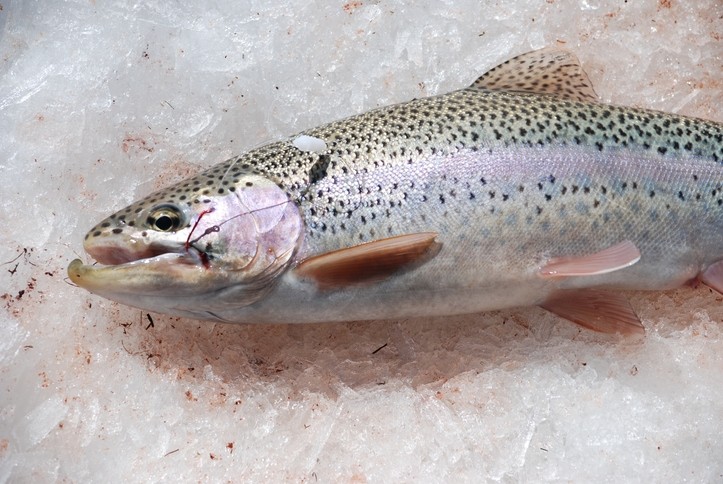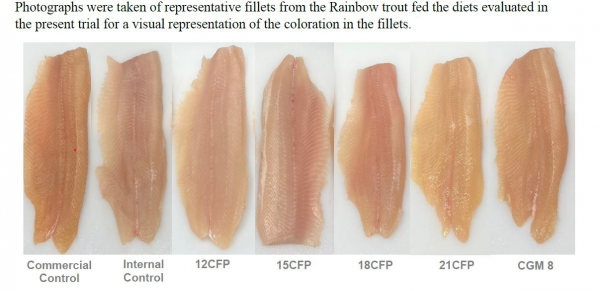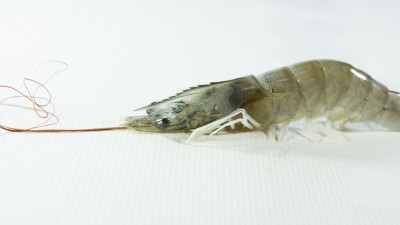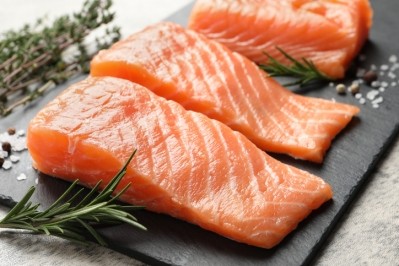Green Plains: Trial shows effectiveness of ultra-high protein in trout diets

The study involving Green Plains’ Corn Fermented Protein 60% (CFP60) product in diets for Rainbow trout (Oncorhynchus mykiss) was conducted at the company’s Optimal Aquafeed AquaLab in Shenandoah, Iowa.
The US firm has been evolving its business from traditional ethanol into a sustainable biorefinery platform producing value-add ingredients over the past few years.
The biorefinery company began ‘Ultra-High Protein’ manufacturing at its facility in Shenandoah in April 2020, with it looking to meet the growing global appetite for sustainable protein in livestock feed, aquaculture diets and pet food.
Employing innovative technology to mechanically isolate the highest value part of the kernel in the traditional ethanol process, in February 2021, Green Plains announced it had generated a product with a 58% protein concentration level, compared to the 30% protein content with standard DDGS, and 48% for conventional soybean meal. It looked to further optimize the production processes, to achieve even higher protein concentrations, with the company announcing in April 2022 that it had a proven path to commercial-scale levels above 60%.
Validation trials
Green Plains has been working on validation trials since then, with it looking to demonstrate the benefits of using its ultra-high protein supplement in feed for aqua, pet and swine.
This year alone, the US biorefinery, through partnerships or via in-house validation work, will have undertaken feed trials in piglets, chickens, Atlantic salmon, Rainbow trout, Vannamei shrimp, catfish, and tilapia, said Louis Rens, SVP global ingredient sales, Green Plains.
In terms of aqua feed, Green Plains' lab in Shenandoah allows the developer to undertake trials evaluating a range of parameters, from coloration to digestibility and growth, he added.
A product with high levels of protein would appeal to producers of carnivorous farmed fish species such as Atlantic salmon, Rainbow trout, or even snakehead, popular in the Chinese and Vietnamese markets, said Rens.
Color concerns
One of the initial queries from potential customers on hearing about market introduction of a product with 60% protein concentration levels was whether the supplement, as it is corn based, would affect the color of the fish fillet, he told us.
The stakeholders wanted to know how the novel protein would stack up against soybean meal or corn gluten meal in terms of the final fish appearance. In the US, trout can be sold as a white colored fillet, and often with reddish-pink flesh as well when astaxanthin is incorporated into their feed.
Customers, continued Rens, were concerned whether a white fillet would end up with a slightly yellowish tint via the inclusion of Green Plains’ CFP60 in the feed, and they were also wondering whether the novel protein might adversely affect the overall result of fillets deliberately pigmented reddish pink via the use of a colorant.
“So, with this trial, we've gone ahead and answered the first question as to how our corn based CPF60, which is very new, compares to a zero yellow coloring plant protein - soybean meal – and how it compares to corn gluten meal."
The team also decided to evaluate whether CPF60 would detrimentally affect the growth of the fish when replacing those more conventional protein types.
The study evaluated increasing inclusion levels of CFP60 against an internal control diet that contained no corn products and a commercial control diet commonly used in North America for trout aquaculture. It focused on larger, grow-out sized fish so that by trial’s end, these fish would be market-sized in terms of commercial production.
Findings
The results showed that fish performance at all inclusion levels was equivalent to that of the two control diets used in the study, and, crucially, fillet coloration was not impacted by CFP60 inclusion levels of up to 18% of the total diet, explained Rens.
Generally, fish fed the CFP60 diets returned growth metrics statistically similar to those observed in the internal and commercial control diets. “For most of the parameters, we noted equal growth and equal feed conversion ratios.”
CFP60 had significantly lower impacts on fillet coloration than corn gluten meal, and at much higher inclusion levels, he said.

“We analyzed the color in the feeds and the color in the fillets. We clearly demonstrated that CPF60 is very close to soybean meal and significantly better than corn gluten meal [in terms of discoloration].”
When analyzing the raw materials, the Green Plains team saw that corn gluten protein had nearly five times more carotenoids than its 60% protein.
“In the US, feed companies typically limit inclusion levels of corn gluten meal to 8%, whereas, if they used our protein, they could comfortably go up to about 15% [feed supplementation level].”
In that way, formulators can substitute more processed animal proteins (PAPs) or increasingly expensive fishmeal with Green Plains 60% protein product, he argues.
“If we can help them by providing them with a highly digestible protein with limited coloring effect, one that is plant based and that is renewable, with a really good carbon intensity (CI) score, then that becomes a very interesting value proposition for customers.”
Now, the next step, said Rens, is to ascertain whether CFP60 affects the same pathways for color uptake in the flesh of fish as astaxanthin. That trial is currently underway, again at the company’s aqua feed testing lab in Shenandoah.












